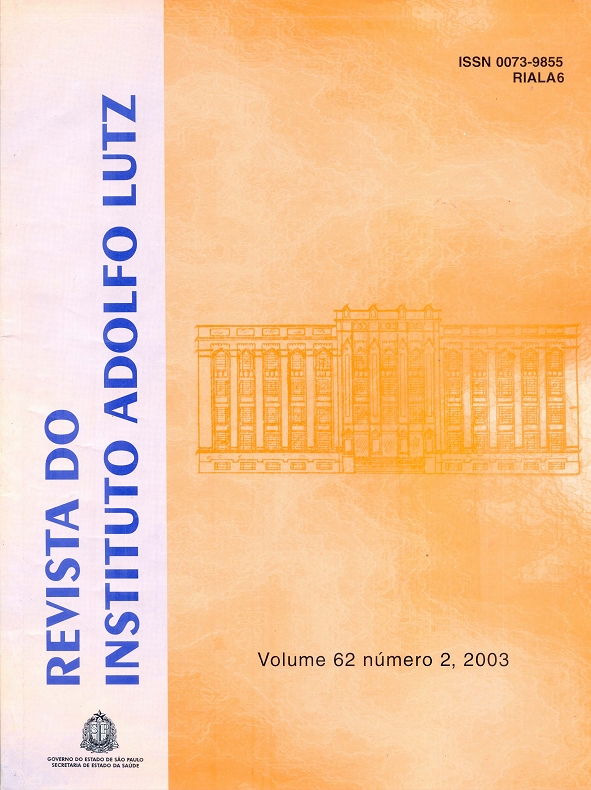Resumen
The erythrocyte glutathione reductase (E-GR) saturation with its coenzyme flavin adenine dinucleotide (FAD) affords the nutritional status regarding the vitamin B2, as FAD proceeds from riboflavin intake. E-GR normally exhibits physiological partial saturation with its coenzyme.OBJECTIVE: To study
the maximum in vivo saturation which could be reached by increasingly oral vitamin supplementation. METHODS: Three groups of normal volunteers were given 3 mg ( group A ), 20 mg ( group B ) and 50 mg ( group C ) riboflavin daily during twenty days. The enzyme activities were assayed before and after supplementation, with and without coenzyme addition to the reagent system. RESULTS: 77%, 83% and 87% saturation were observed in the groups A, B and C respectively. CONCLUSION: Increasing in vivo
saturation was observed with increasing oral doses of riboflavin supplementation, but total saturation
was not observed even with the highest oral 50 mg riboflavin supplementaion.
Citas
1. Bayoumi RA, Rosalki SB. Evalution of methods of coenzyme activation of erythrocyte enzyme for detection of deficiency of vitamins B1,B2 and B6. Clin. Chem., 22(3):327-35, 1976.
2. Beutler E. Effect of flavin compounds on glutathione reductase activity: in vivo and in vitro studies. J. Clin. Invest.,48:1957-66, 1969.
3. Beutler E. Glutathione reductase: stimulation in normal subjects by riboflavin supplementation.Science,165:613:5, 1969.
4. Beutler E. Red cell metabolism – a manual of biochemical methods. Grune & Stratton, Inc., 3º ed., 1984. p.72-73.
5. Fernández-bañares F, et al. Factors associated with low values of biochemical vitamin parameters in healthy subjects. Internat. J Vit Nutr Res, 63:68-74, 1993.
6. Flatz G. Enhanced bilding of FAD to glutathione reductase in G-6-PD deficiency. Nature, 226(23):755, 1970.
7. Garrett RH, Grisham CM. Coenzymes and Vitamins. In: Biochemistry, Flórida: Sauders College Publishing; 1995.cap.14.p.474-80.
8. Hoorn RKJ, Flikweert JP, Westerink D. Vitamin B1, B2 and B6 deficiencies in geriatric patients, measured by coenzyme stimulation of enzyme activities.Clin Chim Acta,61:151-62, 1975.
9. Kuizon MD, Natera MG, Alberto SP et al. Riboflavin requirement of Filipino women. Euro J Clin Nutr, 46:257-64, 1992.
10. Mandula B, Beutler E. Synthesis of riboflavin nucleotides by mature human erythrocytes. Blood, 36(4):491-9, 1970.
11. Mccornick, DB. Riboflavin. In: Shilds ME, Olson JA, Shike M. Modern nutrition in health and disease, 8.ed., Philadelphia: Lea & Febiger; 1994.p.366-75.
12. Nichoalds GE. Assessment of status of riboflavin nutriture by assay of erythrocyte glutathione reductase activity. Clin Chem, 20(5):624-8, 1974.
13. Toh SY, Thompson GW, Basu TK. Riboflavin status of the elderly: ditary intake and FAD-stimulating effect on erythrocyte glutathione reductase coefficients. Euro J Clin Nutr, 48:654-9, 1994.
14. Yawata Y, Tanaka K. Regulatory mechanism of glutathione reductase activity in human red cells. Blood, 43:99-109, 1974.

Esta obra está bajo una licencia internacional Creative Commons Atribución 4.0.
Derechos de autor 2003 Revista do Instituto Adolfo Lutz
